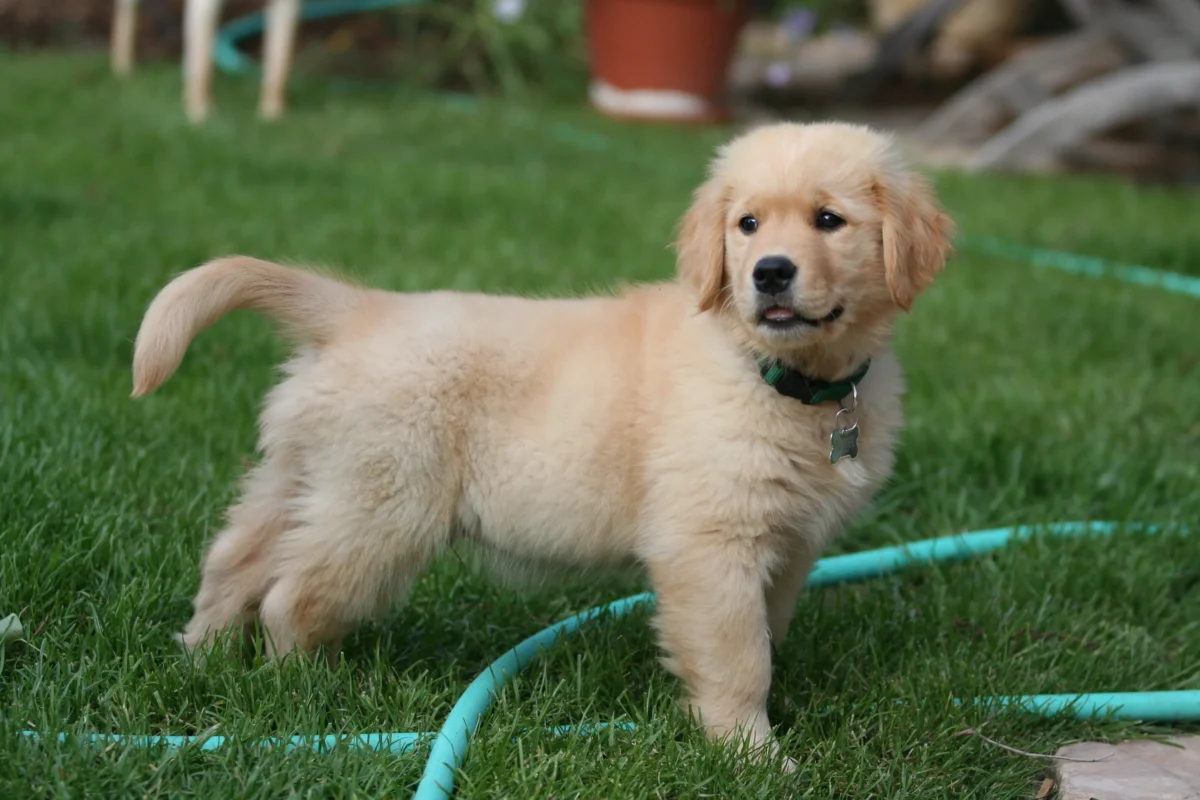Golden Retrievers are beautiful dogs with breathtaking features. Caring for their teeth is an essential part of their regular maintenance. This ensures your dog maintains their cosmetic features, but clean teeth are central to overall health.
Brushing their teeth regularly is mandatory for avoiding potentially deadly health conditions. This article will show you how to clean a Golden Retriever’s teeth using the easiest but most efficient method.
Cleaning a Golden Retriever’s Teeth
Depending on the breed and disposition, cleaning any dog’s teeth can be challenging. Luckily Golden Retrievers are some of the calmest dogs in existence.
Brushing their teeth generally isn’t difficult, assuming they take the proper steps. Use the following method from start to finish for the best possible results.
Get a Quality Dog Toothbrush
The first step to brushing your Golden Retriever’s teeth is getting a quality dog toothbrush. This is what to look for in a good dog brush:
- The head of the brush should be small enough to fit into your dog’s mouth comfortably. It should also have soft bristles that are gentle on gums but firm enough to remove plaque buildup.
- The handle should be short enough to reach all areas of your dog’s mouth quickly but long enough that you can use it without straining yourself.
- The best brushes have rubber grips, so you don’t have to worry about dropping them. You don’t want them to slip out of your hand when your pet is wriggling around.
Once you’ve found the right brush, you need to find a toothpaste suitable for your dog.
Choosing the Right Toothpaste
Do not use human toothpaste on your pet, as the ingredients may irritate their gastrointestinal tract or cause other problems. You must be mindful of the following:
- Avoid using fluoride-based kinds of toothpaste — they are not safe for dogs or cats, according to the American Veterinary Dental Society (AVDS). Fluoride can cause vomiting, diarrhea, hyperthyroidism, central nervous system toxicity, and death in pets.
- Look for products containing low abrasives, such as baking soda or calcium carbonate. These will help remove plaque and tartar on your dog’s teeth without scratching the enamel.
- Choose an antiseptic or antibacterial formula if your dog has periodontal disease or has gingivitis (gum inflammation). These formulas kill bacteria on contact and help prevent infection.
Next, it’s time to put your products into action. However, we need to make sure your dog is comfortable with brushing its teeth.
Getting Your Dog Used to Toothbrush
The first step in getting your dog used to having their teeth brushed is to get them comfortable with having a toothbrush and toothpaste in their mouth. This can be done by using a “taste bud tickler.”
Taste bud ticklers are made from small pieces of rawhide, which are about the size of a toothbrush. You’ll want to find one that is not too hard or soft, so it won’t be uncomfortable for your dog. You can also use something like a piece of uncooked spaghetti or even a strip of beef jerky.
Once you have your taste bud tickler ready, take it into the bathroom with you and place it inside your dog’s mouth. Hold onto their collar so they can’t run away from you and keep them still for about 10 seconds while they chew on the treat.
Do this until your dog gets used to chewing on the treat without trying to eat it right away. Once they seem comfortable chewing on it, add some water to your finger and rub it along their gum line. This will help get their saliva flowing, making brushing your teeth easier when you start doing it regularly!
After these steps, show them the toothbrush and let them smell and lick it. Slowly replace it using the same manner you did with the taste bud tickler. This should be a reasonably easy step since you’ve already gotten them used to having an object around their gums.
Brush Their Teeth
Begin this part of the process by placing a small amount of toothpaste on the tip of your finger. Use this to gently run the toothpaste over your dog’s teeth and tongue.

« golden retriever vs boxer
Goldendoodles: Everything You Need to Know »
We’re using your finger for this process to get your dog used to being gentle and not biting once you start brushing. If we plant the idea in their head that they shouldn’t bite because it’s our fingers, this will carry over to the actual brushing.
After preparing them, use the following steps to complete the process:
- Place a small amount of toothpaste on the toothbrush and allow your dog to smell it. Gently hold the bottom or top of their mouth, depending on where you start. Use one finger to roll their lips up or down to expose a row of teeth.
- Gently begin brushing their front teeth first, allowing them to get used to it. Assuming they’ve accepted the brushing, thoroughly but quickly move towards the back rows of teeth.
- Divide the brushing into four sections: Bottom right, bottom left, top left, and top right. Squirt a small amount of water into their mouth for rinsing between each section. This also gives them a small break.
- Repeat these steps until all four sections are complete. Once you are finished, give them one good final rinse to remove any other toothpaste from their mouths.
If you have any difficulties, use the following tips.
Additional Tips
Sometimes you will run into challenges. Use these solutions to move past any roadblocks:
- If your dog resists, use treats as lures to get them to comply.
- You may need to harness them to a post or anything that won’t move if they attempt to run.
- If necessary, have a partner that the dog knows assist you during the brushing process. Two people will be easier than one.
- If necessary, you may need to use a harness if your dog hates the process.
The most important part of learning how to brush a Golden Retriever’s teeth is ensuring you take your time with the process. Allow your dog to get used to each step as you move along.









